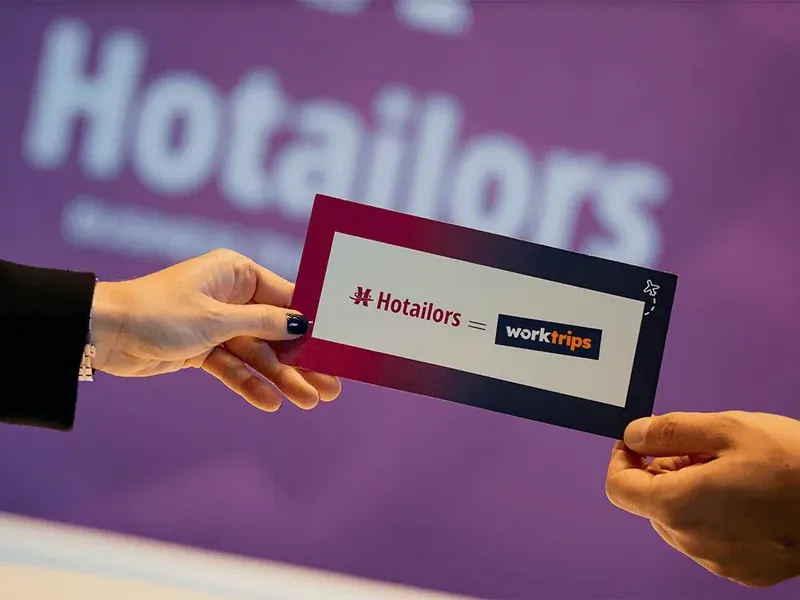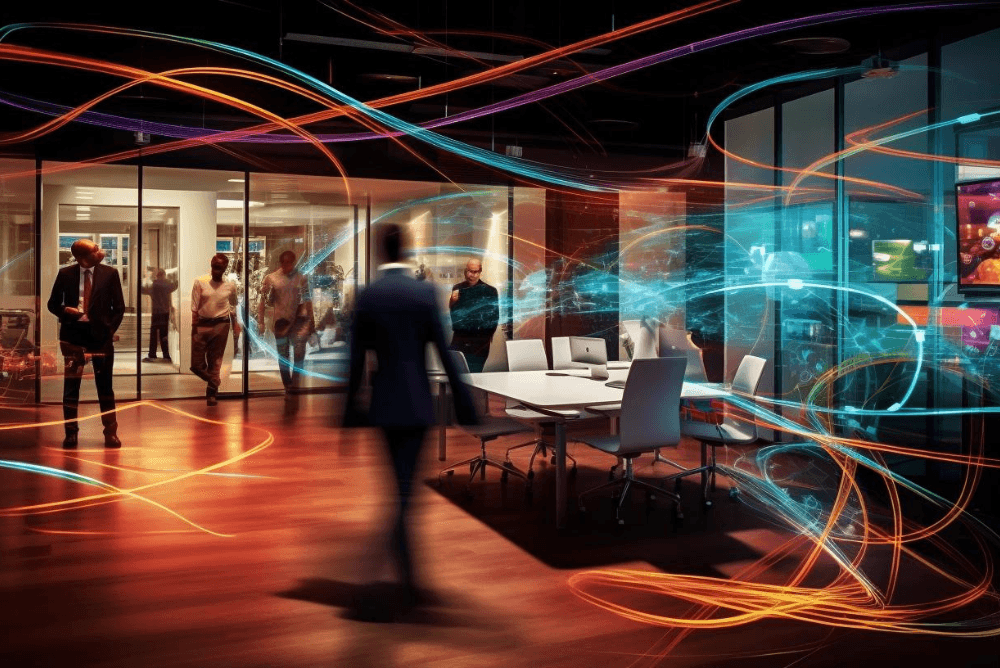Listening to users: How it's done at WorkTrips!
17 Apr 2024
WorkTrips is in contact feedback loop with the users.
Meet Maciej Stopierzyński, Founder of WorkTrips.com, a platform dedicated to simplifying the organization and booking of business trips.
Autentika: What is behind the creation of WorkTrips? Could you share a little bit about your journey and your product’s journey? Was it straightforward or full of twists and turns?
Maciej Stopierzyński: The evolution of our product is best described as a journey marked by numerous adjustments and strategic shifts. It all began in 2015 when the concept of personalizing hotel stays emerged. We were a startup; our product, Facebooking, aimed to streamline hotel arrangements for individual clients. We got into a startup accelerator in Slovenia, but during the acceleration process, we realized that scaling our business would be challenging due to the impending data protection regulations.
At that point, we shifted our focus to serving travel agencies. Our research revealed that travel agents relied on outdated hotel reservation systems, prompting us to envision a solution to elevate their service standards. It was a novelty in the B2B product market. Previously, agents expended considerable time and effort on manual tasks such as scouring reservation systems for options, handpicking the best offers, and compiling them into PDF documents for clients—a process taking an average of 45 minutes.
Through extensive dialogue with travel agency professionals, it became clear that this manual process was time-consuming. Surprisingly, no one had explored the potential for automation. In response, we introduced a revolutionary product named Hotailors. It allowed agents to easily and conveniently create offers for clients. By using advanced algorithms, Hotailors sifted through vast databases, refined hotel selection criteria, and presented agents with the top 15 offers tailored to their client's needs. Ultimately, the agent would choose four final proposals from them and send them directly to the client from the interface.
Did you know then that your product met the market's needs?
Our tool proved so appealing that during our brief three-month acceleration in Ljubljana, we secured contracts with Slovenia's three largest travel agencies. Yet, the most valuable aspect was the feedback we received about how to improve our product. Somewhat later, Google became our client, and their strong emphasis on tool usability led us to gather highly valuable feedback from their users and travel managers. I must admit that facing reality was painful.
The most challenging part was that we were acutely aware of the existing flaws, that the code beneath the interface was "held together with chewing gum." Still, we knew we could only improve it once we determined if the product resonated with the target audience.
We had several waves of feedback. We addressed errors as they arose because criticism continued to flow in. When approximately a thousand users were already using our product, we received survey results in which they evaluated two main parameters: technology and customer support. In the technology area, we scored 2/6, but in customer service – 6/6. It was then that we realised we were on the right track, that when technology faltered, our people could step in to assist. Simultaneously, we refined the technology, regularly collecting feedback from users and our customer service, which informed us about the reasons travellers contacted them.
What followed next? How did you arrive at the point you're at today?
One day, a client informed us that offering hotel reservations wasn't sufficient; they also needed transport to those hotels. Hence, we introduced the option to book flights – though this process also took some time. Firstly, as a fledgling company, we couldn't immediately access competitive flight prices. Secondly, we were contending with rounds of feedback, not all favourable.
We persisted, and our dedication was appreciated by the clients, fostering a strong relationship with them. We also secured funding, enabling us to expand our developer team and improve the code's quality. This funding also facilitated improvements to the usability and aesthetics of our product. We engaged a UX/UI agency and revamped subsystems’ interfaces. By then, we had three interfaces: the user panel, the administrator panel, and our back-office interface – admittedly, the latter looked the least refined. Operating under the assumption that our customer service could handle any issues, we often left improvements for this part of the system until the final stages. This scenario was no exception.
Though that interface is still in use today, we've recently commenced intensive work on it. Our agents will soon sigh a sigh of relief as they receive a product that functions seamlessly and boasts a polished appearance, intuitive design, and ergonomic features. Furthermore, we're implementing mechanisms to automate most of their tasks, thereby increasing the volume of reservations.
Are you still expanding the product with new features?
We maintain an ongoing feedback loop with our clients. Recently, we introduced the ability to book ground transportation. Now, through WorkTrips, you can purchase tickets for trains in Poland, Europe, and the USA and buses operated by major networks. Additionally, we've rebranded to avoid being solely associated with hotels. Thus, Hotailors has evolved into WorkTrips, a change that hit the mark perfectly, as our focus is immediately apparent from the name alone.

Currently, we cater to clients from various parts of the world, tailoring our product development to meet the needs and expectations of local markets.
WorkTrips users hail from diverse cultural backgrounds, utilise different date and time formats, and transact in various currencies. We continuously strive to adapt to local requirements, making system usage easier for users. For instance, we've implemented features to eliminate the need for currency conversions and simplify handling time formats.
10 questions we’re going to ask you when we start working together
So, you're always attentive to your users' feedback.
The book "Continuous Discovery Habits" by Teresa Torres, recommended to me by one of our closely collaborating clients, has shed light on many aspects. The book advocates for project teams to consistently gather feedback about their products to adapt to evolving user needs. Indeed, we diligently collect this feedback by analyzing user behaviour on the website or through surveys.
For instance, consider how we introduced the option for travel expense reimbursement. When users can't find suitable connections in niche markets among our offered options, they purchase the ticket themselves and receive reimbursement from their employer – or indirectly from us. Thus, these changes aren't merely superficial alterations to the interface; they often entail adjustments to processes. These adjustments are sometimes in response to a client's needs and sometimes a collaborative proposal aimed at achieving heightened satisfaction levels for both the client and end users.
How do you gather feedback today?
Users have the option to provide feedback directly within the tool itself. In WorkTrips, this feature is very well seen in the interface. While some product owners may perceive it as an admission of product imperfections, we consider it a significant advantage. Users can simply click a button, highlight a section of the page where something isn't functioning correctly, jot down a comment, and send it to us. Additionally, they can even record what they see on the screen, and the file will be added to the report.
We're informed about their operating system, browser, screen resolution, language, and more. This enables us to replicate and rectify errors more efficiently. The well-known phrase "it works for me" is humorously used within the company because ultimately, we must ensure it works for everyone.
Would you say that feedback has shaped your company?
Absolutely. Without gathering feedback, we wouldn't have developed our tool. For startups, it's a pivotal moment. Lack of feedback leaves you uncertain about the viability of your idea and unaware of any missteps. As humans, we often perceive our work as flawless, but it's through feedback from other users that we uncover blind spots. The key is to maintain an open mind, recognizing that others may interpret our application differently, and strive to understand the user.
Does the user's location context, as mentioned earlier, matter here? Different countries, cultures, and date formats?
Let me provide an example that illustrates this. In some countries, the typical calendar view starts with Sunday, so Sunday is the first day in the column. We noticed that some users book trips starting from Sunday, rather than Monday, and then modify their bookings. Initially, we didn't know why this was happening, but only after analysis did we discover the reasons.
We also always react when a client from a new location or industry appears; we examine their habits and needs. This is how we launched the short-distance ride ordering service, specifically Uber, which is not core for us, but we simply strive to respond to the client's needs. Another example is adding the "business trip application" option in the tool, where the user can send their business travel plan to their supervisor before ordering services, and the supervisor can see exactly where someone is going, when, and how much it will cost.
Read also: Why business app design stands apart in UX/UI? My top conclusions
Does artificial intelligence help you in the processes you just described?
AI and machine learning mechanisms have been in our product for some time now, actually appearing before the whole big AI hype began. They involve personalized suggestions for the user - for example, the system suggests a hotel that other employees from the same company have chosen. So we try to tailor offers to the specific client, based on the choices of other users from the same company or industry. The algorithm is constantly learning and analyzing what other users have chosen to give users the most accurate suggestions. It works similarly to recommendation engines in shopping or movie services. Users also have the option to set appropriate filters and preferences, such as the number of layovers, costs, shorter stopovers, etc.
Is AI a hot topic in your industry?
The initial enthusiasm presenting AI as a breakthrough technology of the future has subsided, but I see that today many people are looking for and finding practical applications of artificial intelligence. There are plenty of webinars and content on how to use AI in management, how to automate processes, file management, data extraction, etc. Of course, we see broader applications of AI in our system and plan to heavily develop this area.
Read also: AI in retail: What’s still possible?
How does business travel management look today? Are many companies still handling this process in a traditional, "manual" way?
Our clients are looking for convenience and time savings. Often, one can still find a process in companies where an employee sends an email to a travel agent requesting service proposals. This usually takes an hour, sometimes even a few hours. The offers received are often not quite right, so the agent searches for alternatives based on the suggestions provided. Once they receive them, they send the request to the supervisor, who, due to a heavy workload, may approve the trip with a delay, risking the previously selected offers becoming unavailable. Then the process starts all over again, leading to increased frustration. As the departure date approaches, service prices also tend to increase.
With WorkTrips, an employee can enter the system, select the destination, hotel, and transportation according to the budget and personal preferences – they know best what, when, from where, and to where they want to fly/drive. They can choose between a large or small hotel, closer to the meeting place or perhaps closer to the airport. They can send a ready request for approval to their supervisor and within several tens or hundreds of minutes, have tickets in their email.
Moreover, we offer 24-hour bilingual support, enabling us to assist clients at every stage of their journey. Sometimes users have specific needs, such as transporting large equipment or additional booking requirements – and we're here to help. This is a service not available on platforms like Booking.com – our customer service is accessible at all times. If there's a delay or flight trouble, the client can call the agent, who handles everything. Also, all payments and transfers are processed on a single platform. In the event of reservation changes, there's no need to issue refunds to accounts, search for numbers, or calculate service fees – we take care of it. Thanks to this, companies can save up to 30% on operational and overall process costs.
Read also: How integrating AI tools into the newsroom's CMS can revolutionise the publishing process
Do you think the introduction of new tools or the digitization of processes in organizations can be met with resistance, despite the aim to improve efficiency? What's behind this?
It's primarily a matter of mindset. For instance, in travel agencies, we've come across attitudes where people perceive change as a barrier and a problem – especially those who have been with the company for many years. Many individuals don't feel the need to learn something new because "everything is working fine" as it is. Often, it's only when you step out of your own shoes, stand beside, and observe your work from an external perspective that you realize whether your current methods are truly effective. And some habits are particularly resistant to change.
It's not specific to any industry – even within WorkTrips, not everyone was enthusiastic about adopting, for example, Google's cloud solution to avoid sending files and collaborate on shared documents. Sometimes, it's challenging to alter habits until we gain a fresh perspective. In such situations, highlighting the benefits, presenting compelling arguments, and providing education become essential. This is precisely what we do at WorkTrips to demonstrate to our clients that booking and managing trips within their organization can be approached differently.



